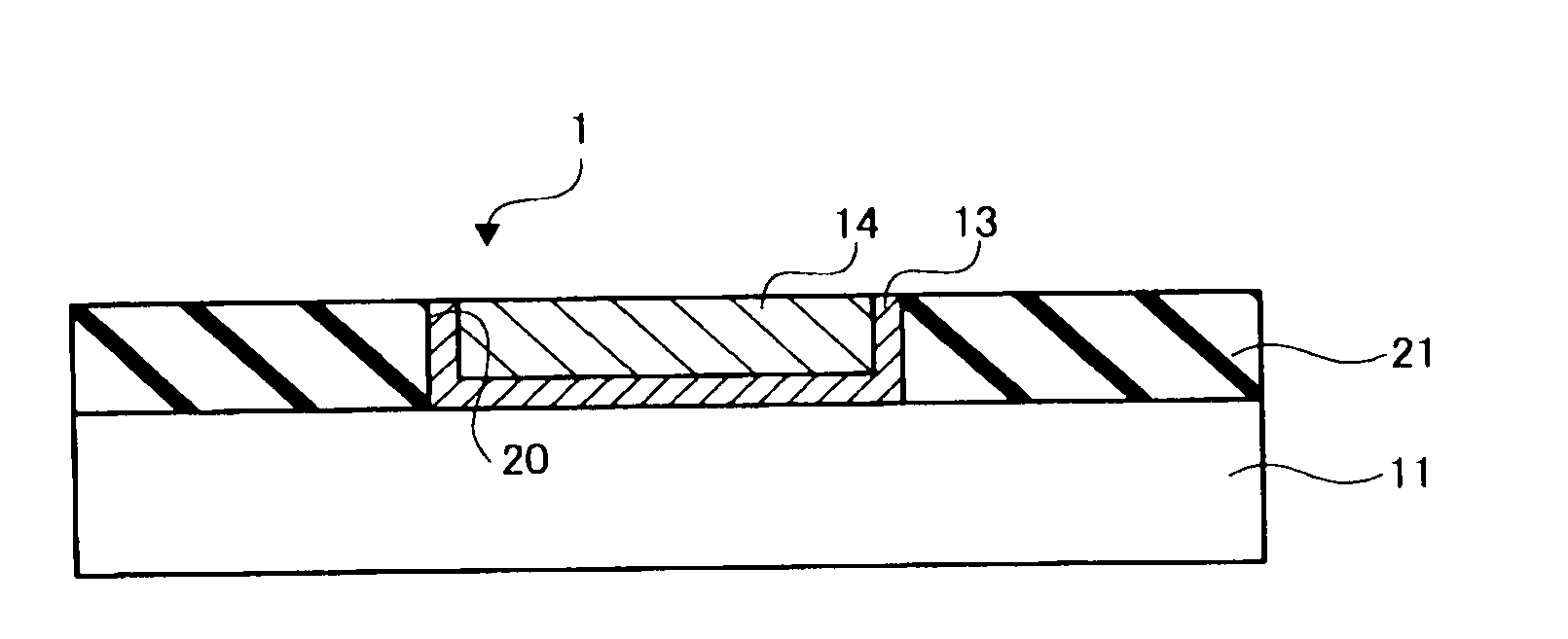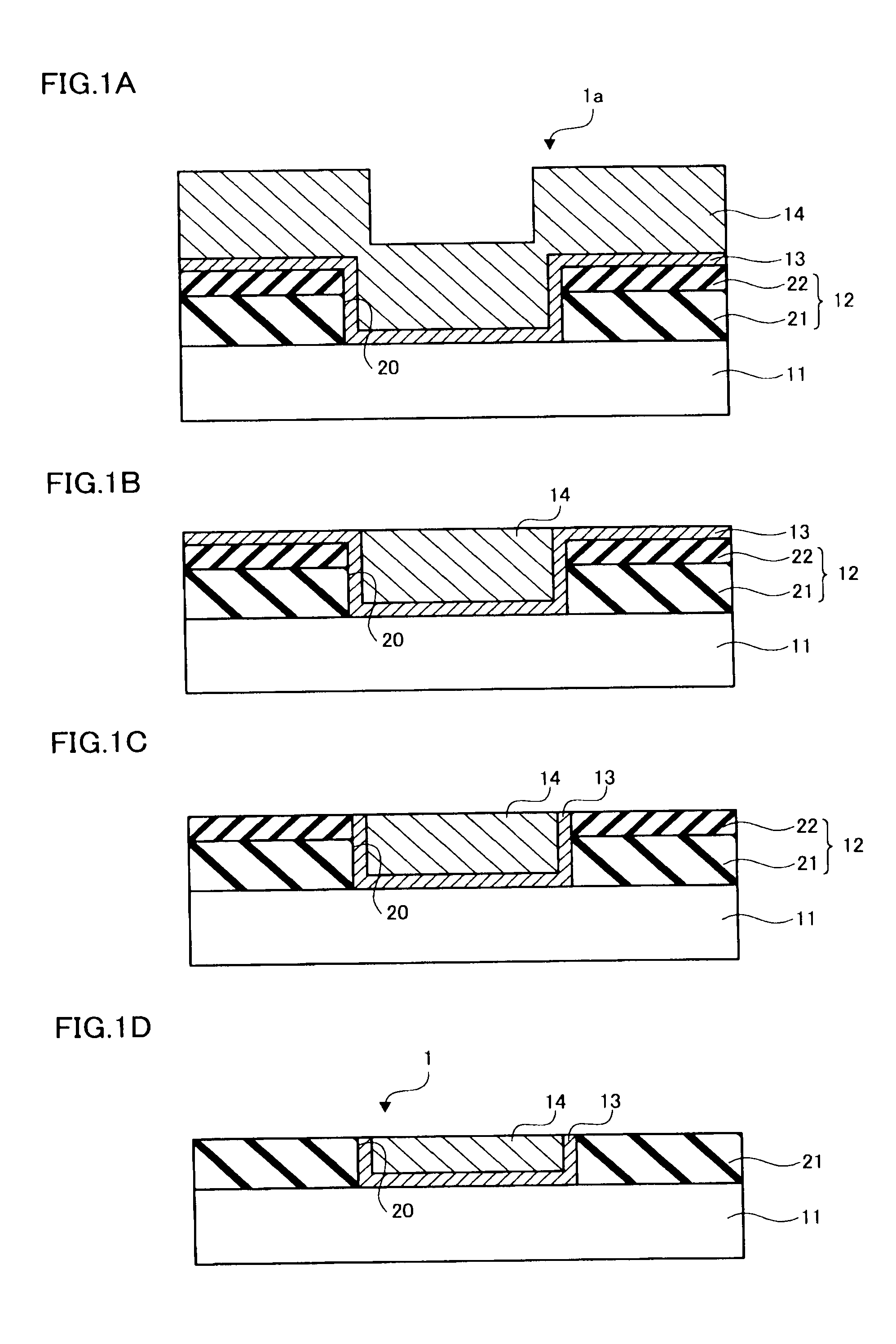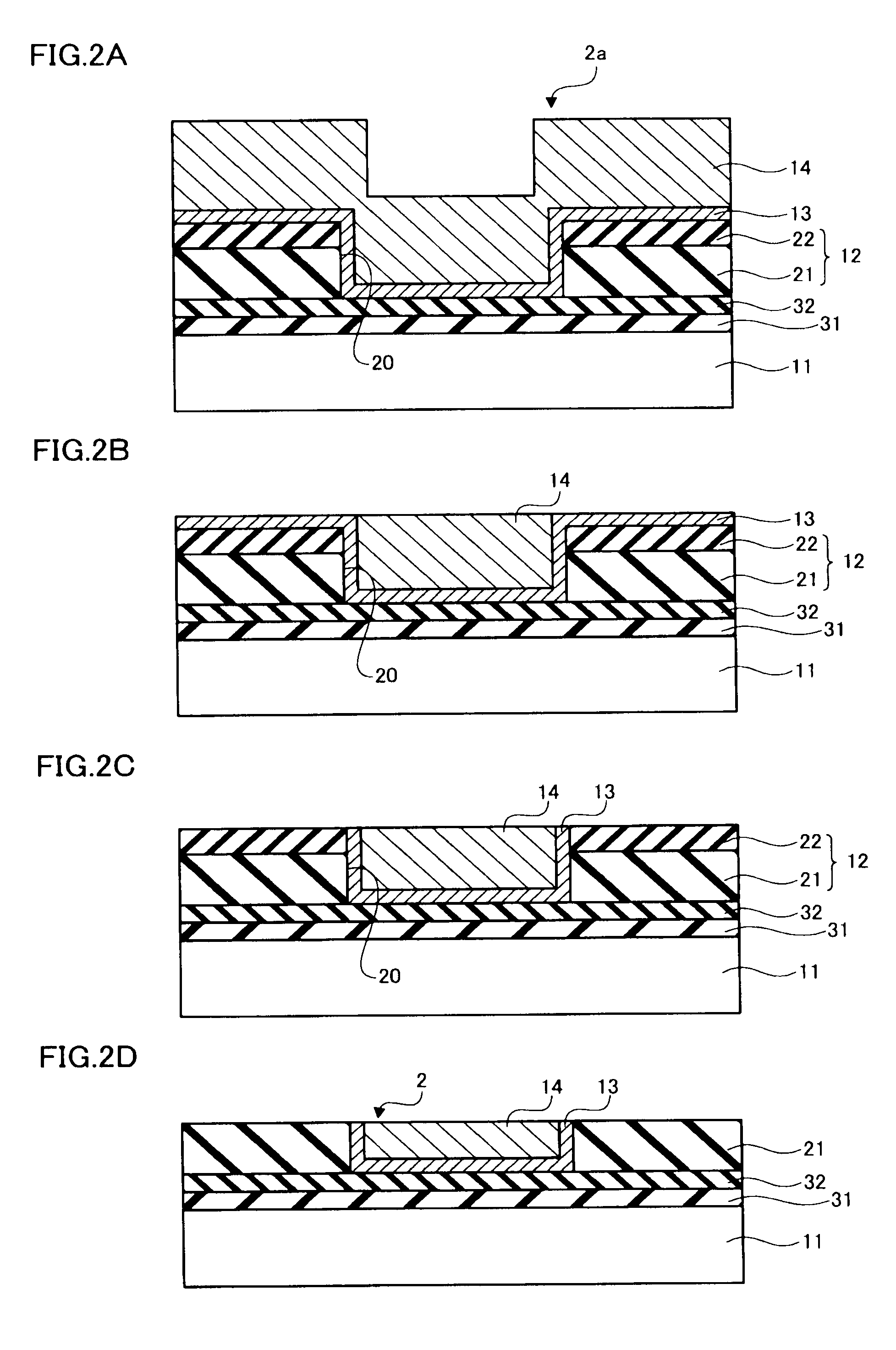Aqueous dispersion for chemical mechanical polishing, chemical mechanical polishing method, kit for chemical mechanical polishing, and kit for preparing aqueous dispersion for chemical mechanical polishing
a technology of chemical mechanical polishing and dispersion, which is applied in the direction of lapping machines, manufacturing tools, other chemical processes, etc., can solve the problems of cracks in the interlayer dielectric, and achieve the effect of efficient polishing, accurately finishing the surface, and sufficient planarization
- Summary
- Abstract
- Description
- Claims
- Application Information
AI Technical Summary
Benefits of technology
Problems solved by technology
Method used
Image
Examples
preparation example 1
4.1.1. Preparation Example 1
Preparation of Aqueous Dispersion Containing Fumed Silica 1
[0123]2 kg of fumed silica particles (“Aerosil #90” manufactured by Nippon Aerosil Co., Ltd., average primary particle diameter: 20 nm) were dispersed in 6.7 kg of ion-exchanged water using an ultrasonic mixer. The mixture was filtered through a filter having a pore diameter of 5 micrometers to obtain an aqueous dispersion containing the fumed silica particles (hereinafter referred to as “fumed silica 1”). The average secondary particle diameter of the fumed silica 2 was 220 nm.
preparation example 2
4.1.2. Preparation Example 2
Preparation of Aqueous Dispersion Containing Fumed Silica 2
[0124]An aqueous dispersion containing fumed silica particles (hereinafter referred to as “fumed silica 2”) was obtained in the same manner as in Preparation Example 1, except for using 2 kg of fumed silica particles (“Aerosil #200” manufactured by Nippon Aerosil Co., Ltd., average primary particle diameter: 7 nm) instead of “Aerosil #90”. The average secondary particle diameter of the fumed silica 2 was 140 nm.
4.1.3. Preparation of Aqueous Dispersion Containing Colloidal Silica Particles
4.1.3-1. Preparation of Aqueous Dispersion Containing Colloidal Silica 1
[0125]A flask was charged with 70 parts by mass of 25 mass % aqueous ammonia, 40 parts by mass of ion-exchanged water, 170 parts by mass of ethanol, and 20 parts by mass of tetraethoxysilane. The mixture was heated to 60° C. with stirring at a rotational speed of 180 rpm. After stirring the mixture at 60° C. for two hours, the mixture was cool...
example 1
4.3. Example 1
4.3.1. Preparation of First Chemical Mechanical Polishing Aqueous Dispersion
[0135]2 kg of fumed silica particles (“Aerosil #90” manufactured by Nippon Aerosil Co., Ltd., primary particle diameter: 20 nm, secondary particle diameter: 220 nm) were dispersed in 6.7 kg of ion-exchanged water using an ultrasonic mixer to obtain an aqueous dispersion. The mixture was filtered through a filter having a pore diameter of 5 micrometers to obtain an aqueous dispersion containing the fumed silica particles.
[0136]A polyethylene container was charged with the resulting aqueous dispersion containing the fumed silica particles in such an amount that the amount of silica was 1.2 mass %. After the addition of 0.5 mass % of quinaldic acid, 0.05 mass % of an acetylene diol-type nonionic surfactant (“Surfynol 465” manufactured by Air Products Japan, Inc., m+n=10 in the general formula (I)), and 1.0 mass % of ammonium persulfate, the mixture was diluted with ion-exchanged water. The mixture...
PUM
| Property | Measurement | Unit |
|---|---|---|
| average particle diameter | aaaaa | aaaaa |
| mass % | aaaaa | aaaaa |
| mass % | aaaaa | aaaaa |
Abstract
Description
Claims
Application Information
 Login to View More
Login to View More - R&D
- Intellectual Property
- Life Sciences
- Materials
- Tech Scout
- Unparalleled Data Quality
- Higher Quality Content
- 60% Fewer Hallucinations
Browse by: Latest US Patents, China's latest patents, Technical Efficacy Thesaurus, Application Domain, Technology Topic, Popular Technical Reports.
© 2025 PatSnap. All rights reserved.Legal|Privacy policy|Modern Slavery Act Transparency Statement|Sitemap|About US| Contact US: help@patsnap.com



